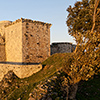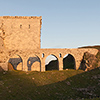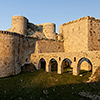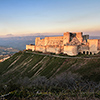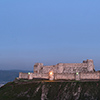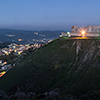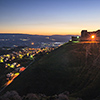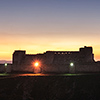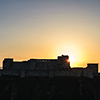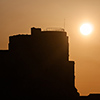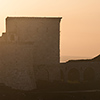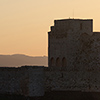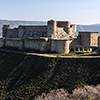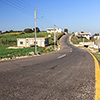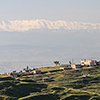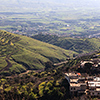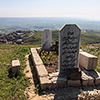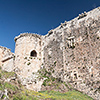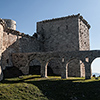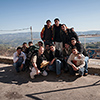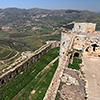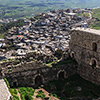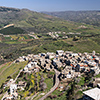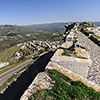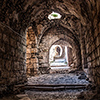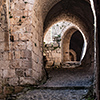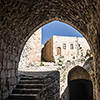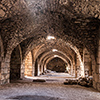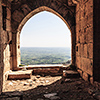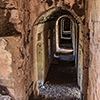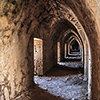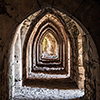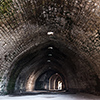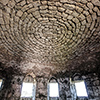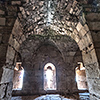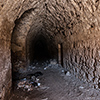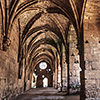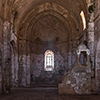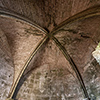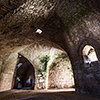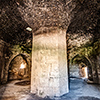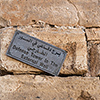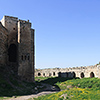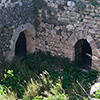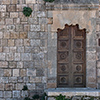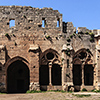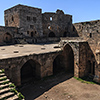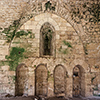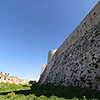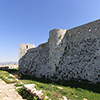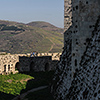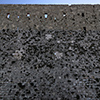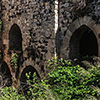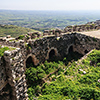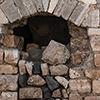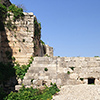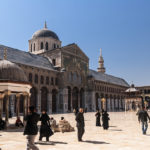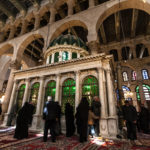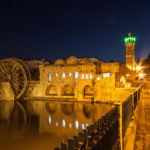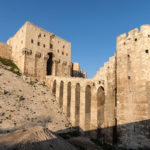Krak des Chevaliers – Crusader Fortress in the Orient
To both, Christians and Muslims, the Syrian Crusader castle Krak des Chevaliers, or in Arabic Qal’at al-Hosn (قلعة الحصن), is one of the most important remnants of the time of the Crusades. For the fortification’s occupant Krak des Chevaliers guaranteed control and access to one of the most important trade channels used since ancient times, leading from the coast of Syria to the inland. Even in the currently ongoing Syrian civil war this UNESCO world heritage still provides protection and strategic benefits, what puts the fortification at the risk of military demolition.
Even on a Friday, the Muslim’s Sunday, one can be lucky making it to start a little round trip despite everything standing still. All roads lead to Rome All roads lead through Homs when it comes to travelling to places in northern Syria from Damascene bus station Harasta, hence getting to Krak des Chevaliers, a massive and relatively well preserved Crusaders fortification in North-West Syria means having a stop in Homs (حمص) as this city is kind of an “interchange station” for the minibusses leaving to Qal’at al-Hosn, like the locals call the castle.
The Krak lies to the north of the highway between Homs and Tartus. Minibusses drop travellers at the highway exit where private taxis wait to cover the rest of the journey as the fortification is still a 45-60 minutes car drive away. To the west of the fort are plenty of newly built places offering accommodation, providing rooms offering a direct view of the Krak. Sleeping in such a room means the indulgence of staying in bed during sunrise and taking sunrise photos in a veeery relaxed way :-)
Originally being built in 1031 by the Kurdish Emir of Homs, so called Hisn al-Akrād (The Kurds’ Castle) fell deserted into the hands of Raymond of Saint-Gilles, one of the leaders of the first Crusade, for the brief time of ten days as the Christian army moved further towards Jerusalem leaving nobody behind at the Krak. After a couple of years the Frenchman returned as Raymond IV, Count of Toulouse to establish his own sovereignty, but neither Raymond nor his son Bertrand made it to capture the fortress that (of course) fell back into the hands of the locals again after the Christian army abandoned it. It was Tancred, Prince of Galilee, a rival of the Saint-Gilles, who took control of the site again when that Norman was expanding the principality of Antioch.
By political marriage the Saint-Gilles dynasty got in possession of the Crusader castle though. Due to insufficient long-term financing and an increasing number of disputes between locals and Christians many fortifications were given over to Knights Hospitaller, so was the Krak des Chevaliers. Two earthquakes destroyed the fortress significantly, what Arabic sources described biblically as “not one stone remained on top of another”. The Hospitallers then built the Krak entirely new and with a Gothic par excellence appearance. The fortress was already pretty strong and could easily resist Saladin sieging it for a month in 1188. Further earthquakes let the Hospitallers strengthening the fortifications more and more, making Krak des Chevaliers having its high time in the first half of the 13th century.
The Knights Hospitaller fortified Krak des Chevaliers significantly. Some of the walls became up to 8 metres thick. The knights built a chapel and erected massive round defence towers. They strengthened the castle by building a system of an outer as well as inner bailey with a ditch in-between. Ready was a military base of operations being perfectly protected, however that only lasted until the end of 13th century as the Europeans got thrown out of the country by Sultan Baibars. The Arabs then got in control of Krak des Chevaliers again and repaired the damages caused by trebuchet bombardment and undermining.
UPDATE 2014: The civil war in Syria is a big tragedy and unfortunately, but also logically, it didn’t spare Krak des Chevaliers as the fortress near the rebel stronghold of Homs still provides very good protection features. Back then the trebuchets of Baibars damaged the fortress, now it is Assad’s airforce throwing bombs onto the Crusader castle premises. Yet again this fortification is in the focus of military actions and hopefully yet again the damages will be repaired.
Before the civil war has started people flocked together on the opposite hill tops of Alawis Heights to celebrate a public festival with a large scale picnic. Plenty of people stayed until late night to watch Krak des Chevaliers being staged by tremendous fireworks. On account of the war such peaceful moments are not possible anymore for a long long time.
Used photo equipment: Canon EOS 20D, Canon EF-S 10-22 f/3.5-4.5, Tamron 17-50 f/2.8, Tamron 28-75 f/2.8, Sigma 80-400 OS f/4.5-5.6

